3/1/2025

AB
Top 5 Autonomous Data Platforms: Leading the Charge in 2025
Autonomous Data Platforms (ADPs) use AI to self-manage, optimize, and secure data operations, drastically reducing manual effort and boosting agility. In 2025, leaders like Autonmis, Oracle, Google BigQuery, Snowflake, and Databricks are redefining data strategy by enabling faster insights, lower costs, and broader data access across teams.
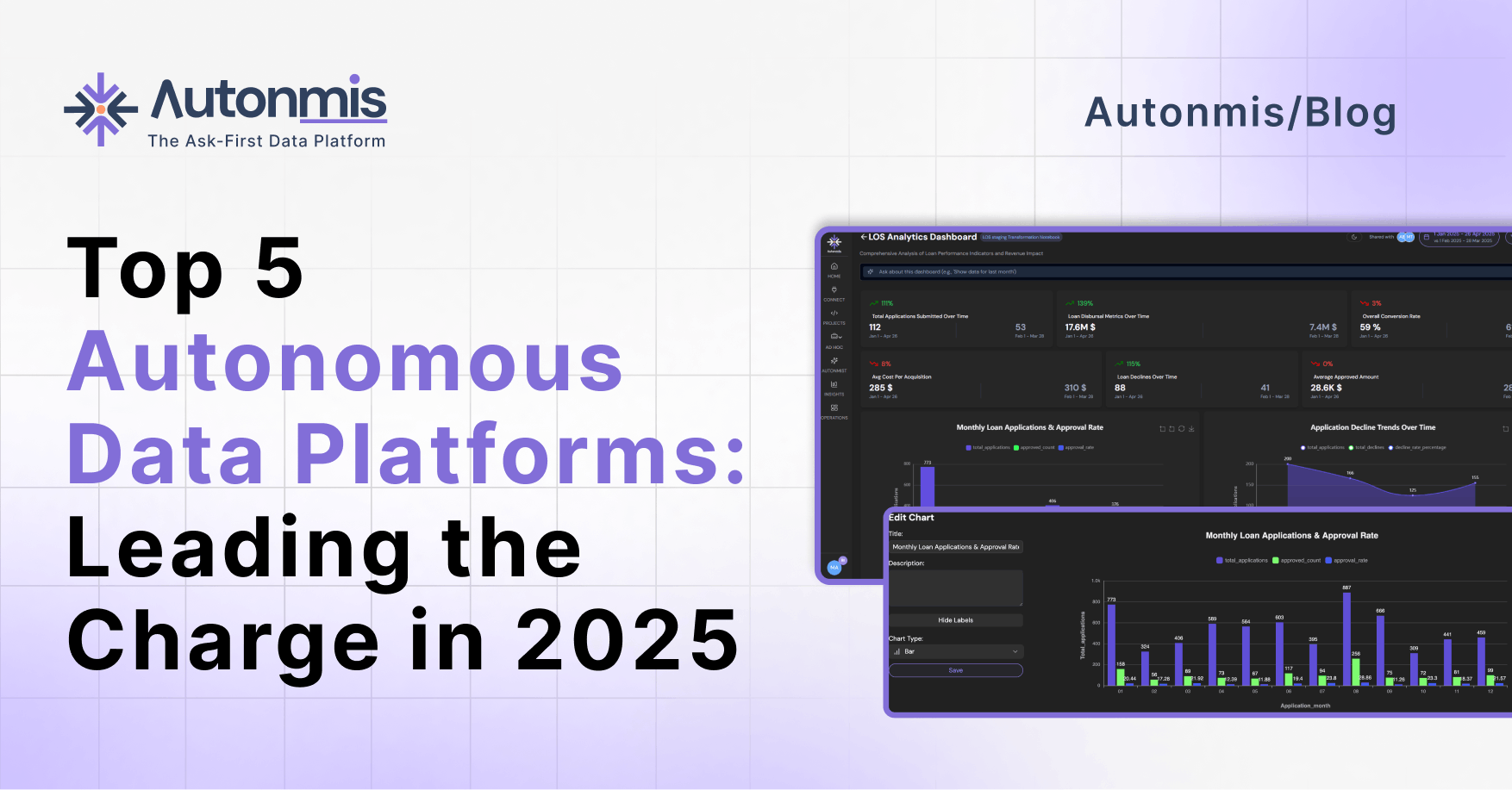
For many data professionals, the daily grind of managing complex data ecosystems can feel like a battle.
But what if your data platform could largely manage itself? This isn't science fiction; it's the reality of Autonomous Data Platforms (ADPs). These aren't just about basic automation; they use AI and machine learning to intelligently self-manage, self-optimize, and even self-heal. Think of it as putting your data operations on a sophisticated autopilot, freeing up your brilliant team for what truly matters.
This post will cut through the hype. We’ll explore what "autonomous" really means for a data platform and spotlight five top autonomous data platforms leading the charge in 2025 that can help you transform your data strategy from a cost center into a strategic powerhouse.
So, What is an Autonomous Data Platform, Really? (And Why Should You Care?)
You've heard "automation" a million times. An Autonomous Data Platform takes it to a whole new level. It's about systems that don't just follow pre-programmed rules but actually learn and adapt.
Here are the hallmarks of a truly autonomous platform:
- Self-Driving Operations: Imagine the platform handling the tedious but critical tasks – provisioning, configuration, patching, backups, and scaling – all on its own. This isn't just about saving time; it's about consistency and reliability.
- Self-Optimizing Performance: The platform constantly monitors workloads and query performance, making intelligent tweaks in real-time to keep things running smoothly and efficiently. No more manual tuning rabbit holes.
- Self-Healing Capabilities: When issues arise (and they always do), an ADP can detect anomalies, diagnose problems, and often resolve them automatically, minimizing downtime before your users even notice.
- Built-in Self-Securing: Think automated security updates, intelligent threat detection, and consistent enforcement of data privacy policies. This helps you sleep better at night, knowing your data is actively protected.
- AI/ML at its Heart: This is the magic ingredient. AI not only powers the autonomous functions but often extends to offering smarter analytics, predictive insights, and even new ways to interact with your data (like natural language queries).
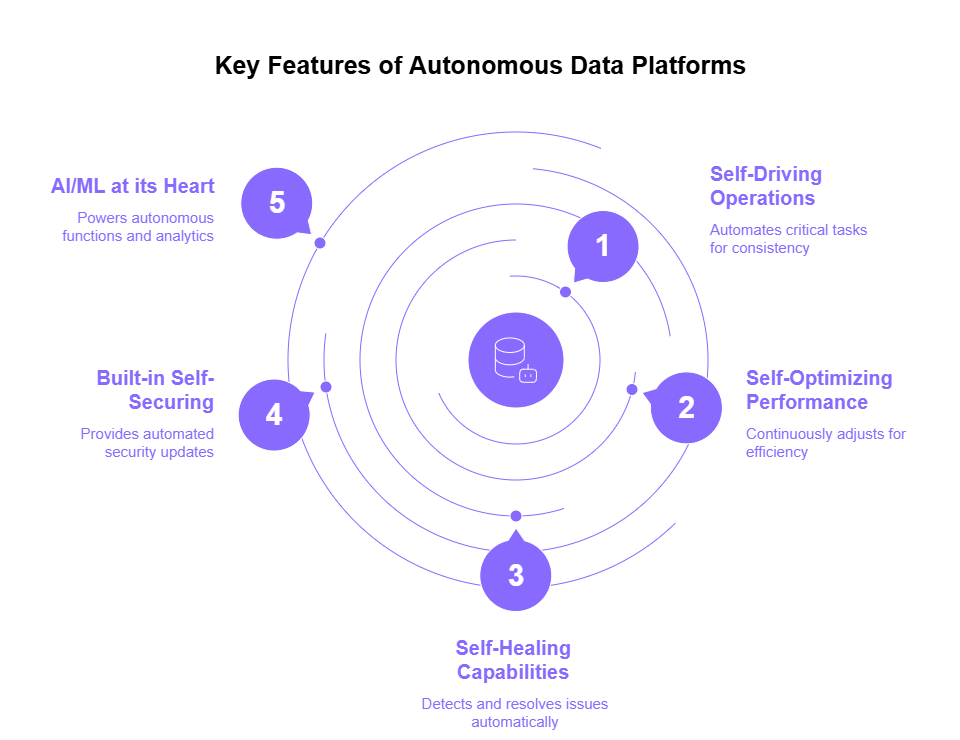
The Top 5 Autonomous Data Platforms Leading the Charge in 2025
Ready to see who's making waves? Here are five platforms genuinely pushing the boundaries of data autonomy.
1. Autonmis: Data Autonomy Through Conversation
- The Gist: Autonmis is shaking things up with its "Autonomous Data Workspace." Imagine your team asking data questions or requesting workflows in plain English, and the platform handles the rest.
- Autonomous Edge:
- Conversational AI: Translates natural language into SQL, Python, ETL jobs, and insights – no coding needed for many tasks.
- "Ask Once, Automate Forever": Empowers users to create self-running, self-monitoring data workflows from simple commands.
- Why It Matters for Leaders:
- True Data Democratization: Business users get answers and build automations themselves, slashing the data team's backlog.
- Radical Simplification: Drastically reduces the time and complexity of data operations, accelerating everything.
- Claimed 60% TCO Reduction: By unifying the stack and minimizing manual work, the cost benefits are compelling.
- Best For: Organizations serious about empowering non-technical users, fostering a truly data-driven culture with minimal friction, and seeing rapid ROI on data automation.
2. Oracle Autonomous Database: Enterprise-Strength Self-Management
- The Gist: A true pioneer in this space, Oracle offers a robust suite of database services designed to run with minimal human oversight, especially for demanding enterprise workloads.
- Autonomous Edge:
- Comprehensive Self-Driving: From provisioning and security to patching, tuning, and repair, it aims to automate nearly all database administration.
- AI-Driven Performance: Adapts and optimizes based on real-time workload analysis.
- Why It Matters for Leaders:
- Frees Up DBAs: Allows database administrators to focus on higher-level data architecture and strategy.
- Mission-Critical Reliability: Built for high availability and top-tier security, essential for heavily regulated industries.
- Best For: Large enterprises, particularly those already within the Oracle ecosystem, running critical applications that demand extreme reliability and security.
3. Google BigQuery (with Dataplex): Serverless Autonomy, AI-Infused
- The Gist: BigQuery is Google's massively scalable, serverless data warehouse, increasingly becoming an "autonomous data-to-AI platform," especially when paired with Dataplex for governance.
- Autonomous Edge:
- Serverless by Design: Forget capacity planning; compute and storage scale automatically.
- AI Assistance (Gemini in BigQuery): Helps with query optimization, code generation, and faster data exploration.
- Dataplex for Automated Governance: Handles data discovery, quality checks, and policy enforcement across your Google Cloud data.
- Why It Matters for Leaders:
- Scalability & Cost-Efficiency: Pay only for what you use, even at petabyte scale.
- Seamless AI/ML Integration: Easy path to leveraging Google's powerful AI tools on your data.
- Best For: Cloud-native businesses, organizations with huge and spiky analytical workloads, and those heavily invested in or moving to the Google Cloud AI ecosystem.
4. Snowflake: Multi-Cloud Simplicity, Now with Cortex AI
- The Gist: Known for its ease of use and multi-cloud flexibility, Snowflake's Data Cloud is embedding more AI-driven autonomous capabilities directly into the platform.
- Autonomous Edge:
- Automated Performance & Scaling: Dynamically adjusts resources and optimizes queries without manual fuss.
- Snowflake Cortex AI: Brings LLM functions, ML-powered forecasting, anomaly detection, and natural language search directly into Snowflake – reducing data movement for AI tasks.
- Why It Matters for Leaders:
- Multi-Cloud Freedom: Avoids vendor lock-in by running smoothly across AWS, Azure, and GCP.
- Accessible AI: Empowers analysts to use AI with familiar SQL, broadening the reach of advanced analytics.
- Best For: Companies with multi-cloud strategies, those focused on secure data sharing and collaboration, and organizations wanting to embed AI into their analytics workflow easily.
5. Databricks Data Intelligence Platform: Lakehouse-Powered AI & Autonomy
- The Gist: Databricks offers a "Data Intelligence Platform" built on an open lakehouse architecture, deeply integrating AI to understand and automate data management.
- Autonomous Edge:
- AI-Powered Engine: Its "Data Intelligence Engine" learns the semantics of your data to automatically optimize performance, storage, and governance.
- Natural Language Interaction: Lets users discover data and generate code using plain language prompts.
- Unity Catalog for Unified Governance: Centralizes security and discovery for all data and AI assets, with automated lineage.
- Why It Matters for Leaders:
- Unified Data & AI: A single platform for data engineering, analytics, and advanced machine learning helps break down silos.
- Open & Flexible: Leverages open-source foundations, offering greater control and adaptability.
- Best For: AI-driven organizations, companies with complex data engineering and machine learning needs, and those seeking a unified, open platform for diverse data roles.
Choosing Your Autonomous Co‑Pilot: A Leader’s Quick Guide
Okay, so how do you pick the right one for your team and your business goals? It’s about matching capability to context - and seeing where Autonmis could be your perfect fit.
Start by asking your team (and yourself):
- What are our biggest data bottlenecks right now?
- Is it speed, cost, access, quality, or a mix of challenges? Autonmis excels at identifying and removing speed and access constraints through automated pipelines and caching strategies.
- What strategic outcome are we aiming for?
- Faster product development? Better customer experience? Optimized operations? Tighter compliance? Autonmis offers tailored modules - like its Self‑Driving Data Lakehouse and Automated Feature Store - that directly accelerate those objectives.
- What does our current tech stack and skillset look like?
- How steep is the learning curve? How well will it integrate? With its low‑code connectors for major cloud platforms, BI tools, and ML frameworks, Autonmis usually slots right in without a weeks‑long ramp.
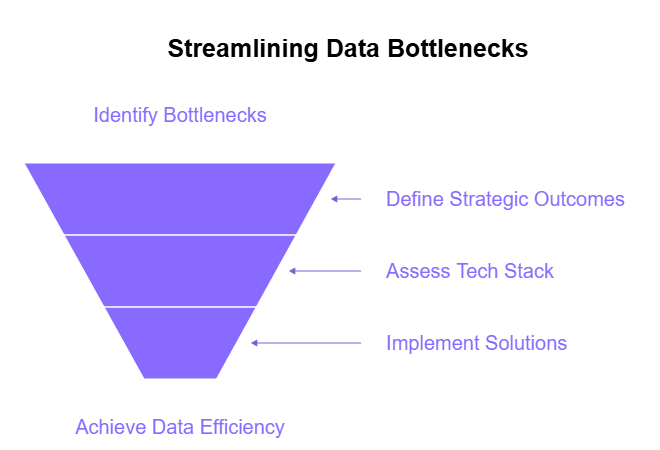
Then, as you evaluate options, weigh these factors:
- Real Autonomy: How deep does the automation go across the data lifecycle?
- Autonmis delivers True Self‑Driving DataOps: from schema evolution to dynamic resource provisioning, it automates end‑to‑end so your engineers can focus on insights, not infrastructure.
- Integration Power: Will it play nice with your existing systems, BI tools, and AI frameworks?
- Autonmis provides pre‑built connectors and APIs for everything from Snowflake and Databricks to Tableau and Vertex AI - minimizing custom build work.
- Future‑Proof Scalability: Can it handle your data growth and evolving performance needs without breaking a sweat (or the bank)?
- Its elastic serverless architecture scales linearly, and pay‑as‑you‑grow pricing means you unlock new tiers of throughput without huge upfront costs.
- Security & Governance Smarts: Does it meet your industry’s compliance needs and offer robust, automated protection?
- Autonmis embeds fine‑grained access controls, automatic lineage tracking, and policy‑driven masking to keep your data safe and audit‑ready.
- User Experience: Is it intuitive for your data pros? Could it empower your business users too?
- Autonmis’s drag‑and‑drop pipeline designer and natural‑language query interface make it easy for analysts and citizen data scientists to derive value - no Python required.
- True TCO: Look beyond the sticker price. What are the potential savings from reduced manual work, optimized infrastructure, and faster value delivery?
- Organizations using Autonmis report up to a 50% reduction in DataOps labor and a 30% boost in query performance - driving ROI in months, not years.
Pro Tip: Don’t just read brochures. Shortlist 2–3 platforms and run a focused Proof of Concept (PoC) on a real business problem. There’s no substitute for seeing it in action with your own data and your own KPIs.
The Future is Autonomous: Are You Ready?
The move towards autonomous data platforms isn't just a fleeting trend. It's a fundamental shift. As AI gets smarter, these platforms will become even more proactive, predictive, and indispensable. Imagine your data systems not just managing themselves, but also suggesting new business opportunities or automatically adapting your data strategy to market shifts.
For leaders like you, embracing this evolution isn't just about keeping up - it's about building a more agile, insightful, and efficient organization.
The question isn't if your data management will become more autonomous, but how effectively you'll lead that change. The platforms are here. The strategic advantage is waiting.
Recommended Learning Articles
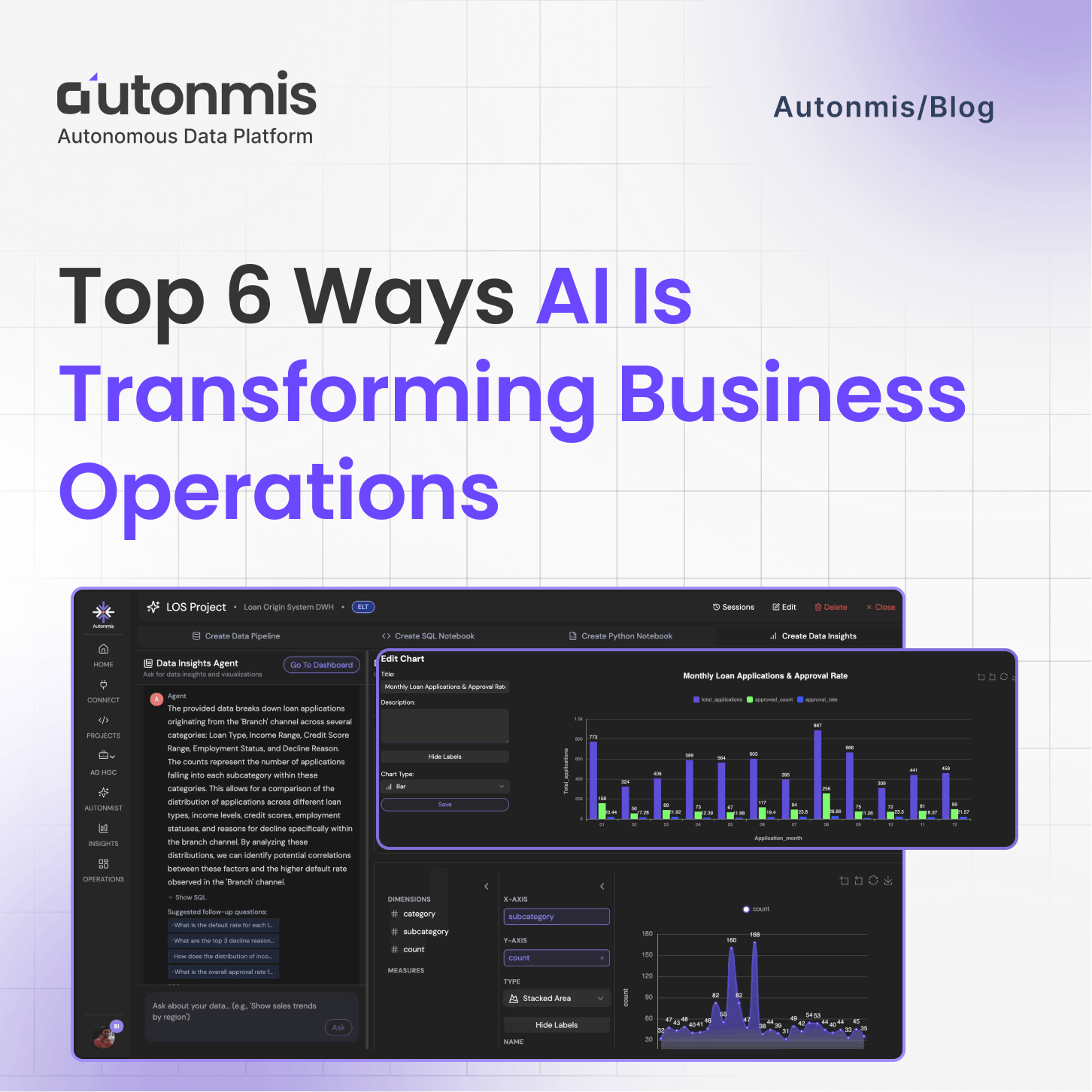
10/23/2025
Top 6 Ways AI Is Transforming Business Operations
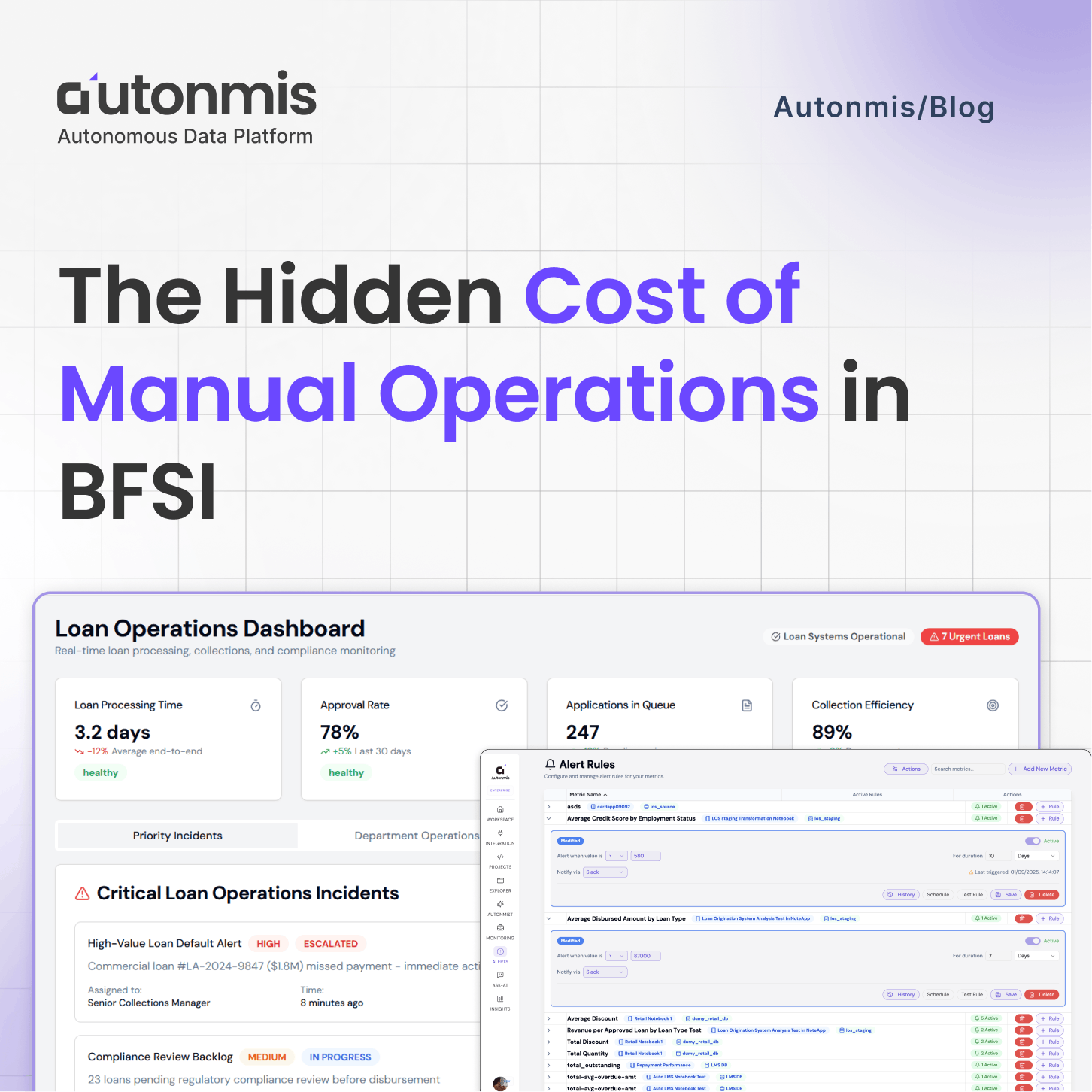
9/22/2025

AB
The Hidden Cost of Manual Operations in BFSI
Actionable Operational Excellence
Autonmis helps modern teams own their entire operations and data workflow — fast, simple, and cost-effective.